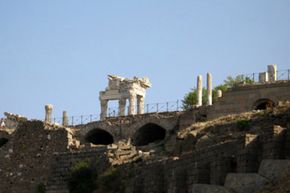Pelting unlucky victims with rotten produce is one of our oldest forms of expression, older even than tomato cultivation. Rotten tomatoes are often associated with Shakespeare's Globe Theater in Elizabethan London, but in actuality, tomatoes were still uncommon and weren't even mentioned in the first English cookbook until 1752, nearly 150 years later.
However, the practice of throwing produce predated the tomato entirely. The first reference came in A.D. 63 when Vespasianus Caesar Augustus was hit with turnips in the midst of a riot in Hadrumetum.
Advertisement
Rotten eggs were also a weapon of contempt used in religious and political protest. Documents dating back to the 18th century refer to people throwing rotten eggs at persecuted Methodists on the Isle of Man. The practice also made its way to the New World, as shown in a speech by Frederick Douglass who recalls bad eggs being lobbed to break up antislavery meetings. Food's use as a weapon was traditionally a product of availability and cost.
Find out when the first actor faced an overripe tomato next.
Advertisement




